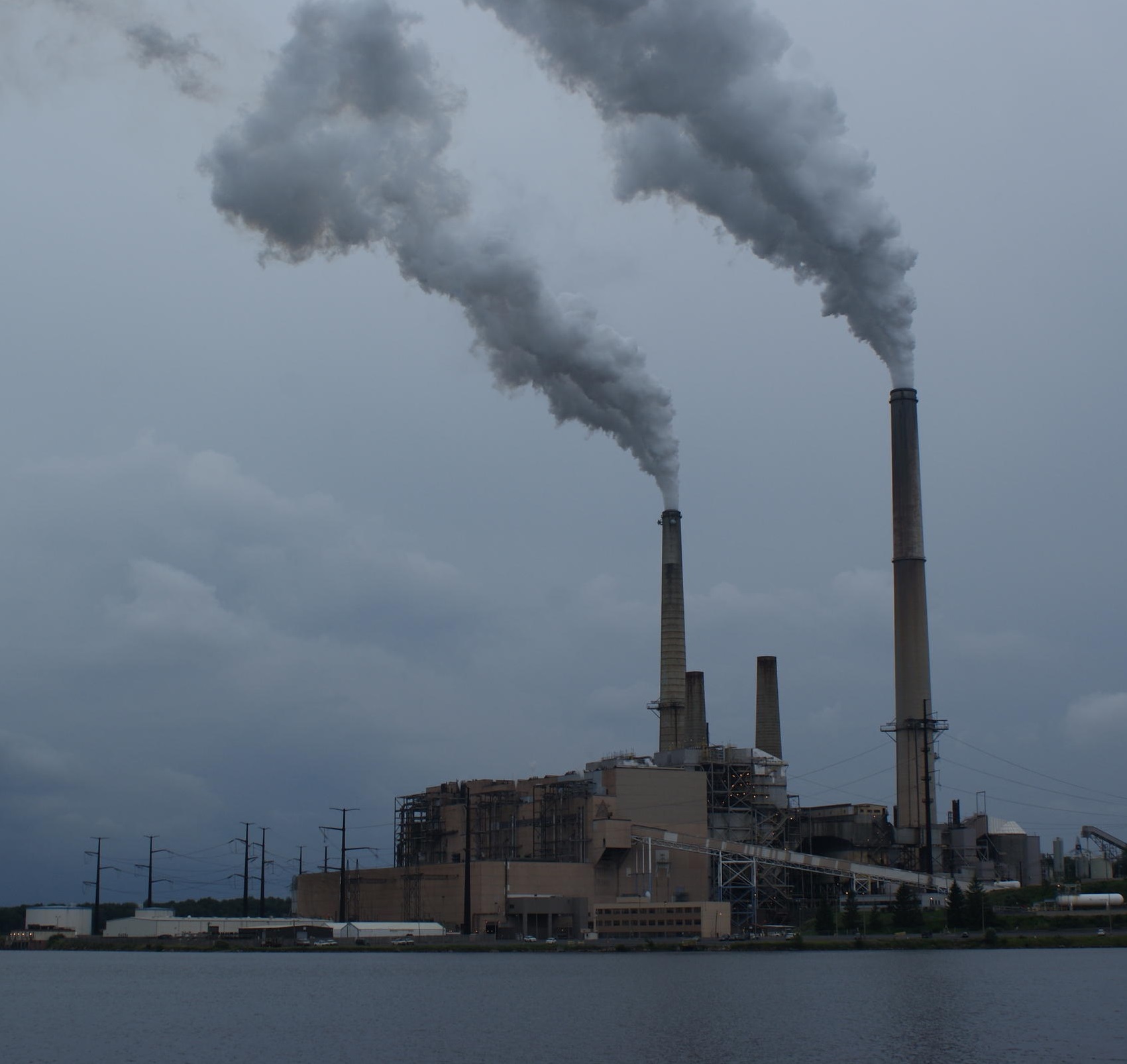Gregory E. Wannier
Deputy Director
As litigation against EPA challenging greenhouse gas regulations moves forward, questions remain as to what, exactly, the DC Circuit will do if it rules for the challengers on the merits of their cases. The two primary options here are: absolute vacatur (removing all force of law from the regulations), and remand of the case without vacatur (maintaining the regulations until EPA issues valid replacements).
Some precedent on these tradeoffs comes from the Clean Air Interstate Rule (CAIR), which was successfully challenged in the DC Circuit as North Carolina v. EPA. At issue in that case was an EPA rulemaking that established a cap and trade system to reduce upwind states’ ability to interfere with air quality for fine particulate matter in downwind states. The Court ultimately ruled that a cap and trade system improperly interfered with National Ambient Air Quality Standard (NAAQS) obligations in violation of the CAA, but allowed EPA’s program to continue until it issued a replacement[1] (EPA just released a replacement Proposed Transport Rule in July 2010, with the final rule expected spring 2011).
As an initial point, the court decided treated all regulations together, noting that “Whether a regulation is severable ‘depends on the agency’s intent.’”[2] In the present cases, language petitioners have cited showing that EPA considers its regulations thus far to be “four related actions” may be damaging to the EPA if the court determines that one of the four rules is unlawful. However, EPA’s regulations likely fall short of being a “single, regional program” that justified unified treatment of CAIR. Given that some petitioners have asked for partial stays of EPA action, EPA will have a strong case that its regulations do not amount to a single program, in a train of argument mirroring that in pending case coordination motions.
More relevantly, the court runs a two-part test to determine whether to vacate EPA’s rules: “’the seriousness of the order’s deficiencies . . . and the disruptive consequences of an interim change.’”[3] For the first, the court there said that very little of CAIR would survive in “anything approaching recognizable form,” and thereby justified a vacatur. However, in its reconsideration of the issue later that year, it relented and instead issued the remand that is still in place today (pending new EPA regulations). Unfortunately for the EPA, this change did not come from a shift in the court’s legal analysis – CAIR remained insupportable. In current litigation, the EPA’s rules have been challenged as being completely invalid (not merely incorrect), which would seem to support a vacatur if EPA loses on the merits.
The other prong, which looks at disruptive consequences, may be of more use to the EPA. Although the court initially vacated the ruling with a justification that regulation activity over fine particulate matter would continue through traditional channels,[4] the court later acknowledged its error:
“The parties’ persuasive demonstration, extending beyond short-term health benefits to impacts on planning by states and industry with respect to interference with the states’ ability to meet deadlines for attaining national ambient air quality standards . . . shows that the rule has become so intertwined with the regulatory scheme that its vacatur would sacrifice clear benefits to public health and the environment while EPA fixes the rule.” NC v. EPA, 550 F.3d at 1178-79.
This describes the requirements to avoid vacatur fairly clearly: EPA will have to show that vacating its greenhouse gas regulations would harm clear benefits to the environment (so it must justify its endangerment finding), in a way that interferes with an existing regulatory scheme (such that disrupting that scheme would constitute a major setback for regulatory efforts). In the context of CAIR, the court was particularly concerned with already-existing and well established trading markets that it would disrupt with an outright vacatur, which helped guide its subsequent retreat from its original judgment.
Interestingly, this prong may be affected in the current cases by the outcome in the pending motions to stay enforcement of EPA regulations: if EPA is prevented from regulating during litigation, there will be no regulatory structure to interrupt, as there was in North Carolina (though delay in carbon regulation could still justify avoiding a vacatur if EPA regulatory activities are stayed). This prong may also affect remedies in a partial victory for challengers: the Tailoring Rule has been said to face the strongest legal challenges, but it also reduces the regulatory burden imposed by the other rules. Realistically, the court may have to perceive a strong legal challenge to both the Tailoring and Timing rules in order to vacate.
EPA may claim further support from language suggesting that “it is appropriate to remand without vacatur in particular occasions where the vacatur ‘would at least temporarily defeat . . . the enhanced protection of the environmental values covered by’ the EPA rule at issue.” This language could be used to argue against suspending carbon regulations, assuming the endangerment finding is supported. However, petitioners may respond by pointing out that “the threat of disruptive consequences cannot save a rule when its fundamental flaws ‘foreclose EPA from promulgating the same standards on remand.’” This language comes from the later-reversed NC v. EPA decision, but quotes a still-valid ruling from 2007, Natural Res. Def. Council v. EPA, 489 F.3d 1250, 1261-62 (D.C. Cir. 2007).
Scholars generally note that remand without vacatur is normally reserved for procedural flaws and inadequate explanations: “the D.C. Circuit does not [waive vacatur] where it finds that the agency’s rules violate the statute the agency is administering.”[5] This plain language looks bad for EPA, which is after all defending its interpretation of the CAA. However, the comparison to North Carolina is particularly instructive here: both cases will potentially involve misapplication of CAA Rules in evolving regulation activities, and so the lenience granted to EPA in the first ruling should help EPA’s chances in the second.
A third option, vacatur with a stay of judgment for some set period of time (so force of law is maintained, but not indefinitely as with a remand), was not seriously considered by the DC Circuit in North Carolina: the court solicited discussion of this option when it first suggested it might revoke its initial ruling, but declined to exercise this option.
[1] Two separate rulings are discussed here. The December 2008 decision, North Carolina v. EPA, 550 F.3d 1176 (D.C. Cir. 2008), overturned the July 2008 vacatur issued in North Carolina v. EPA, 531 F.3d 896 (D.C. Cir. 2008).
[2] Id. at 929.
[3] Here, the court quotes Allied-Signal, Inc. v. Nuclear Regulatory Comm’n, 998 F.2d 146, 150-51 (D.C. Cir. 1993).
[4] Notably, the court was comforted that State Implementation Plan (SIP) Calls could continue to be issued in conjunction with Nonattainment Area (NA) and Prevention of Significant Deterioration(PSD) requirements under Title I of the CAA. NC v. EPA, 531 F.3d at 930.
[5] Kristina Daugirdas, Evaluating Remand Without Vacatur: a New Judicial Remedy for Defective Agency Rulemaking, 80 N.Y.U. L. Rev 278, 283 (2005). Further support for this comes from cases: see EDF v. EPA, 898 F.2d 183 (D.C. Cir. 1990) (remanding an EPA decision for inadequate consideration of factors); Allied-Signal, Inc. v. U.S. NRC, 988 F.2d 146 (D.C. Cir. 1993).




